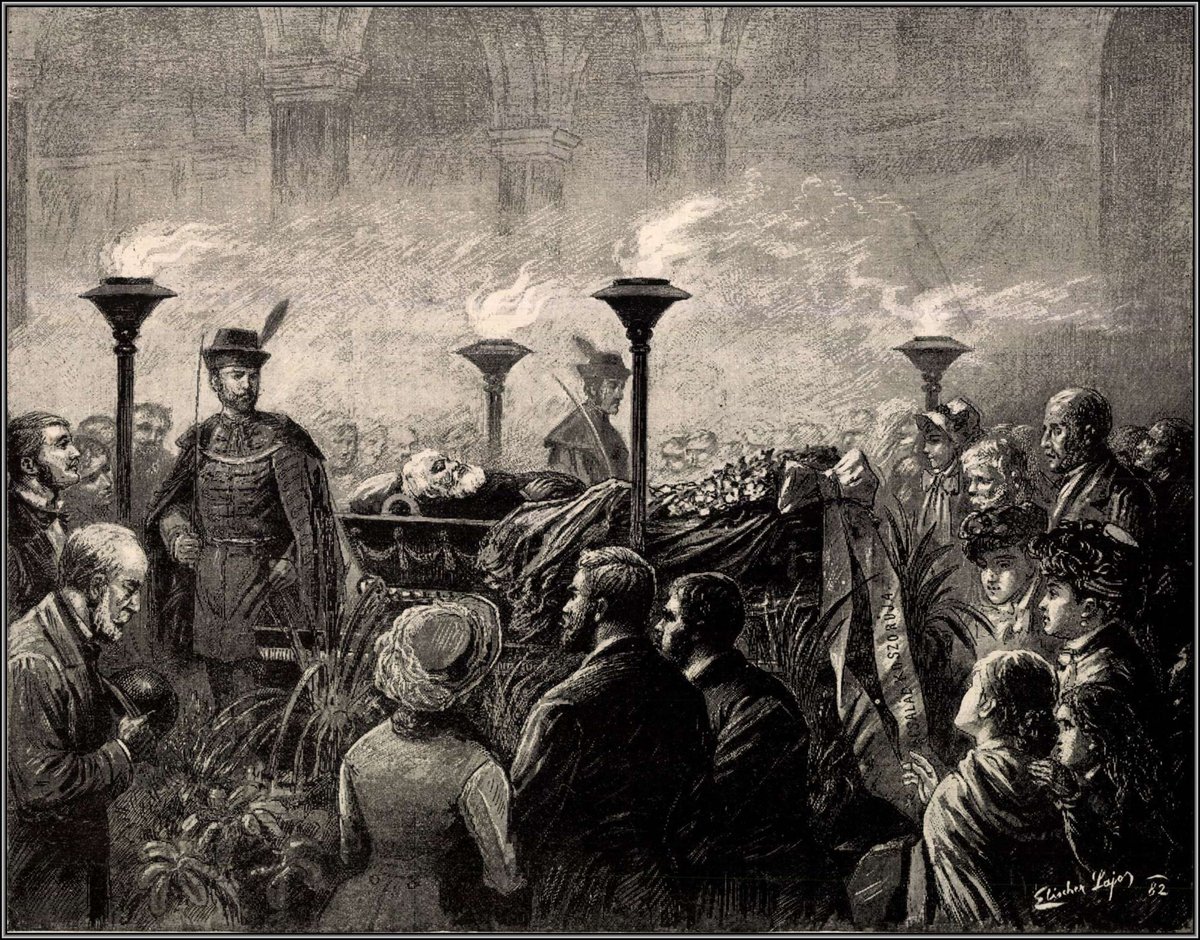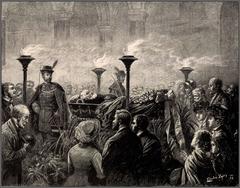
Hungarian Academy of Sciences: Visiting Hours, Tickets, and Exploring Budapest’s Historical Sites
Date: 14/06/2025
Introduction
The Hungarian Academy of Sciences (Magyar Tudományos Akadémia, MTA) stands as a pillar of Hungary’s scientific, cultural, and architectural heritage. Founded in 1825 by the philanthropy of Count István Széchenyi, the Academy is a landmark of national pride and an essential destination for those seeking to understand Hungary’s intellectual and cultural evolution. Its neo-Renaissance headquarters, completed in 1865 and ideally located on Széchenyi István Square beside the Danube, not only exemplifies architectural brilliance but also anchors the Academy’s enduring commitment to research and international collaboration.
This guide provides up-to-date information on visiting hours, ticketing, special events, accessibility, and practical tips for making the most of your visit. Whether you are a history enthusiast, architecture aficionado, or curious traveler, the Hungarian Academy of Sciences offers a unique window into Hungary’s vibrant cultural and scientific scene (mta.hu, science-guide.eu, hungarytoday.hu).
Table of Contents
- Overview and Historical Background
- Founding, Mission, and Evolution
- Architectural and Cultural Significance
- Visiting Information
- Location and Nearby Attractions
- Dining & Facilities
- Visitor Tips
- Frequently Asked Questions (FAQ)
- Conclusion & Further Resources
Overview and Historical Background
Founding, Mission, and Evolution
Established in 1825, the Hungarian Academy of Sciences was born out of a national awakening and a drive to foster scientific and linguistic advancement. Count István Széchenyi’s initial endowment sparked a broader movement, with subsequent support from Hungarian nobility. The Academy’s early mission centered on standardizing the Hungarian language and promoting science and the arts—a vision that reflected Hungary’s aspirations for cultural autonomy within the Habsburg Empire (mta.hu).
Renamed in 1845, the Academy has since developed into a self-governing organization with eleven scientific sections and a vibrant community of over 13,000 researchers. Its bicentenary in 2025 will be marked by special exhibitions and celebratory programs, highlighting its pivotal role in Hungarian science and culture (hungarytoday.hu).
Architectural and Cultural Significance
The Academy’s neo-Renaissance headquarters, designed by Friedrich August Stüler, is a masterpiece of 19th-century architecture. Situated on the Pest side of the Danube, the building’s grand façade, elegant columns, and richly adorned interiors symbolize Hungary’s commitment to progress and enlightenment. The ceremonial hall, with its frescoes and gilded details, is particularly noteworthy (budapest.city).
Over the decades, the Academy has become not only a center for scientific research but also a cultural hub, hosting exhibitions, public lectures, and international conferences such as the World Science Forum (World Science Forum).
Visiting Information
Opening Hours & Tickets
- General Public Access: The Hungarian Academy of Sciences is primarily an academic institution, so regular public access is limited.
- Academy Club Restaurant: Open Monday to Friday, 12:00–22:00 (Akadémia Klub).
- Guided Tours and Events: Access to the main building is typically available during special events, public lectures, exhibitions, or by joining a guided tour. These may require advance booking and, in some cases, a modest ticket fee.
- Admission: Entry to public areas and exhibitions is often free, but special events and guided tours may charge between 1000 and 2000 HUF (science-guide.eu).
Always check the official website or contact the Academy for updated visiting hours and ticket requirements.
Accessibility
The Academy is committed to accessibility, with ramps and elevators available for visitors with disabilities. Some historic sections may still pose challenges, so it is advisable to contact the Academy in advance to discuss specific needs.
Guided Tours & Special Events
Guided tours—offered in Hungarian and English—provide an in-depth look at the Academy’s history, architecture, and scientific achievements. These are typically available during cultural festivals, special open days, or by prior arrangement (Akadémia Klub).
- Booking: Advance reservations are essential, as tours are not regularly scheduled.
- Events: The Academy regularly hosts public lectures, exhibitions, and cultural events, including the Hungarian Science Festival and bicentenary programs in 2025 (hungarianhub.com).
Location and Nearby Attractions
Located at Széchenyi István tér 9, 1051 Budapest, the Academy is within walking distance of:
- Széchenyi Chain Bridge: Iconic bridge connecting Pest and Buda.
- St. Stephen’s Basilica: Renowned for its panoramic city views.
- Danube Promenade: A scenic riverside walkway.
- Parliament Building: An architectural marvel visible from the Academy.
The area is well-served by public transport—Metro M3 (Arany János utca), tram lines 2, 2B, 23, and several bus routes. Limited street parking is available, but public transport is recommended due to the central location (Travel Europe Guide).
Dining & Facilities
Academy Club Restaurant:
Located in the Danube-side wing, the Academy Club Restaurant offers refined Hungarian and international cuisine with river views. Reservations are strongly recommended (Akadémia Klub). Facilities also include restrooms, cloakrooms, and event spaces.
Visitor Tips
- Plan Ahead: Check the Academy’s event calendar for public events and guided tour opportunities.
- Combine Visits: Take advantage of the Academy’s central location by exploring nearby landmarks.
- Dress Smartly: Business casual attire is recommended, especially for events or dining.
- Photography: Allowed in public spaces, but always confirm with staff.
- Cash vs. Card: While cards are widely accepted, carrying some Hungarian forints can be useful for small purchases (Lonely Planet).
- Best Times: Visit in spring or autumn for pleasant weather and fewer crowds (Destination Daydreamer).
Frequently Asked Questions (FAQ)
Q: What are the visiting hours of the Hungarian Academy of Sciences?
A: Public access is generally limited to special events, guided tours, or dining at the Academy Club Restaurant (Mon–Fri, 12:00–22:00). Always check the official website for the latest updates.
Q: Are tickets required?
A: General access is free, but some events, exhibitions, or tours may require tickets or advance registration.
Q: How do I book a guided tour?
A: Guided tours must be booked in advance via the Academy’s event calendar or by contacting organizers directly.
Q: Is the building accessible for disabled visitors?
A: Yes, with ramps and elevators, though some historic areas may be challenging. Contact the Academy for details.
Q: Can I take photos inside?
A: Photography is usually allowed in public areas, but restrictions may apply during certain events. Always check with staff.
Q: Are children welcome?
A: Children are welcome at public events and in the restaurant, but the environment is generally formal.
Conclusion
A visit to the Hungarian Academy of Sciences offers an enriching blend of intellectual history, architectural splendor, and cultural vibrancy. Whether you attend a special event, enjoy a meal overlooking the Danube, or admire the Academy’s façade during a walk along the river, you’ll experience one of Budapest’s most significant institutions. Plan ahead by checking for public events, booking guided tours, and considering nearby attractions to make the most of your visit.
For the latest updates on visiting hours, events, and exhibitions, refer to the official resources and consider downloading the Audiala app for real-time alerts and guided tour bookings.
Summary
The Hungarian Academy of Sciences is a testament to Hungary’s enduring pursuit of knowledge and innovation. Its neo-Renaissance architecture, vibrant scientific community, and dynamic cultural programming make it a must-visit landmark in Budapest. Whether you are drawn to its historical significance, scientific achievements, or architectural beauty, the Academy offers a memorable experience at the heart of the city (mta.hu, budapest.city, hungarianhub.com).
References
- Hungarian Academy of Sciences: History, Visiting Information, and Cultural Significance in Budapest, 2025 (mta.hu/english)
- Hungarian Academy of Sciences Visiting Hours, Tickets, and Cultural Highlights in Budapest, 2025 (science-guide.eu)
- Hungarian Academy of Sciences Visiting Hours, Tickets & Budapest Historical Sites Guide, 2025 (mta.hu)
- Practical Visitor Tips for the Hungarian Academy of Sciences: Visiting Hours, Tickets, and Budapest Historical Sites, 2025 (akademiaklub.hu)
- Memorial Year to Celebrate Bicentennial of the Hungarian Academy of Sciences, 2023 (hungarytoday.hu)
- Hungarian Science Festival and Public Events, 2023 (hungarianhub.com)
- Budapest Tourism Board, 2025 (budapestinfo.hu)
- World Science Forum (World Science Forum)
- Travel Europe Guide (Travel Europe Guide)
- Lonely Planet (Lonely Planet)
- Destination Daydreamer (Destination Daydreamer)








































































































































































